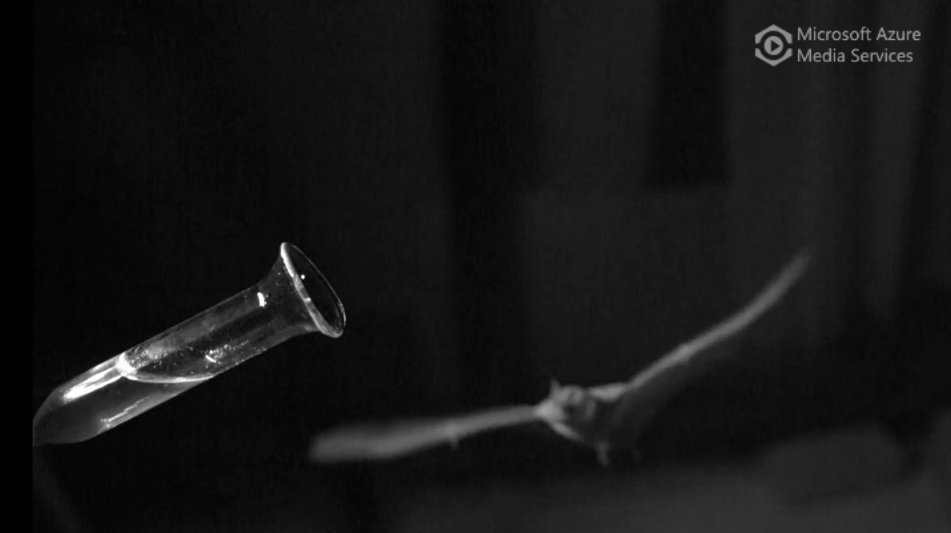From dragonflies to hummingbirds, hovering flight is among the most complex and captivating forms of animal movement—a physiological feat of size, musculature and wing development.

Credit: Eran Amichai
From dragonflies to hummingbirds, hovering flight is among the most complex and captivating forms of animal movement—a physiological feat of size, musculature and wing development.
For nectar-feeding bats that hover as they feed from flowers, this aerial maneuver also depends on extra-long whiskers unlike those of most other bat species, according to a Dartmouth College-led study in the journal Proceedings of the Royal Society B. The researchers used high-speed cameras to capture how the stiff hairs jutting forward from the face of nectar-eating bats provide enhanced spatial information that guides the animals as they swoop in to quickly feed—within a second or less—on succulent flowers without landing.
“The whiskers of nectar-feeding bats are critical sensory organs that provide high-quality input the brain works with to optimize hovering. It’s a cool junction between sensory biology and bio-kinematics, between form and function,” said lead author Eran Amichai, a postdoctoral researcher in biological sciences at Dartmouth who studies echolocation in bats. Co-authors are postdoctoral fellow David Boerma from the American Museum of Natural history, animal behavioralist Rachel Page at the Smithsonian Tropical Research Institute in Panama, Sharon Swartz, a professor of biology and engineering at Brown University, and Hannah ter Hofstede, a past assistant professor of biological sciences at Dartmouth now at the University of Windsor in Canada.
The researchers worked at the Smithsonian Tropical Research Institute recording Pallas’s long-tongued bats—a South and Central American bat that has the fastest metabolism of any mammal—as they drank from hand-blown glass flowers designed for the study to replicate the plants the animals feed from. High-speed infrared cameras captured photos and video of the bats as they descended upon the glass flowers and navigated their muzzles and tongues into the “bloom” to eat the nectar. Feedings typically lasted between a half- to one second.
The researchers found that bats with clipped whiskers were less agile and accurate during feeding and flight than animals with untouched whiskers. The animals with clipped whiskers were held for a few days until the hairs regrew, then released back into the jungle. “Clipping the whiskers doesn’t reduce the bats’ ability to feed, they just do it a little less gracefully,” Amichai said. “If it were gymnastics, they’d get an 8.5 instead of a 9.8.”
The role of long whiskers in nectar-feeding bats’ flight control provides new insight into the coevolution of the bats with the flowers they feed on, Amichai said. The majority of bats possess short whiskers not arranged in any particular pattern or direction. But the researchers found that whisker length in nectar-eating bats evolved at least twice to—along with long tongues and faces—potentially help them better navigate the deep chambers of the flowers they prefer. In turn, the long reach these flowers require results in more pollen sticking to their pollinators and thus the broader proliferation of their kind.
The researchers plan to continue their work using higher-resolution images, flowers that move, interactions with predators and other expansions on the experimental model, Amichai said.
In the meantime, the latest study offers a fascinating glimpse into how nectar-feeding bats combine various forms of sensory information to navigate the world around them, Amichai said. Their world is a combination of scent, echolocation, spatial memory, knowledge of the seasons and the physical sensation and equilibrium provided by their whiskers.
“I find thinking in these terms of switching back and forth between completely different ways to perceive the world—and seamlessly integrating their input—to be a mind-blowing concept,” Amichai said. Understanding how animals perceive and interact with their surroundings helps scientists develop better conservation strategies, he said.
“We are strange animals—we rely almost solely on vision and, to a lesser extent, hearing to perceive the world. As a result, we interpret other animals’ behavior in similar terms and that often leads us to completely misinterpret what they’re doing and why,” Amichai said. “Understanding the sensory world of other animals helps us ‘see the world through their eyes’ and understand their behavior, needs and challenges better.”
The paper, “By a Whisker: The Sensory Role of Vibrissae in Hovering Flight in Nectarivorous Bats,” was published Feb. 1 by the Proceedings of the Royal Society B. The work was supported by a Journal of Experimental Biology Travelling Fellowship (JEBTF1911291) from The Company of Biologists.
Journal
Proceedings of the Royal Society B Biological Sciences
DOI
10.1098/rspb.2022.2085
Method of Research
Experimental study
Subject of Research
Animals
Article Title
By a whisker: the sensory role of vibrissae in hovering flight in nectarivorous bats
Article Publication Date
1-Feb-2023




